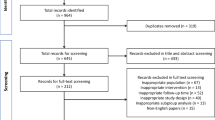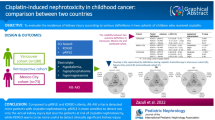Abstract
Objective: To assess factors that affect cisplatin nephrotoxicity. Methods: In 425 patients treated with cisplatin, we assessed the effect of pretreatment factors and treatment conditions on the rise in serum creatinine with the first course of cisplatin, on the maximum rise in serum creatinine over the entire course of the cisplatin therapy, and on residual nephrotoxicity after the last cisplatin treatment ended. (Because of the nature of the relationship between serum creatinine and creatinine clearance, rise in serum creatinine was divided by pretreatment creatinine squared.) Patients were dichotomized into the upper quartile versus the lower three quartiles of degree of nephrotoxicity. Multivariate analyses were based on logistic regression, controlling for cisplatin dose per course. Results: Controlling for cisplatin dose per course, factors most closely associated with nephrotoxicity during the first course of cisplatin were: serum albumin and potassium, body surface area, and administration of cisplatin over 2–5 days per course vs 1 day (negative associations). Controlling for cisplatin dose per course, the single factor most closely associated with maximum life-time cisplatin nephrotoxicity was concurrent use of a vinca alkaloid (negative association). Controlling for cisplatin dose per course, factors most closely associated with residual nephrotoxicity after the end of cisplatin therapy were cumulative dose of cisplatin, concurrent use of metoclopramide (positive associations), uric acid and concurrent use of phenytoin and a vinca alkaloid (negative associations). The association of nephrotoxicity with uric acid and with body surface area was felt to be an artifact resulting from its positive association with pretreatment serum creatinine. Nephrotoxicity during the first course of cisplatin also correlated significantly with autopsy kidney cortex platinum concentrations in 77 evaluable patients. Conclusions: (1) While several factors correlated with cisplatin nephrotoxicity, most of the observed nephrotoxicity was not explained by the variables identified. (2) While most patients received intravenous hydration, patients receiving high hydration volumes did not have significantly less nephrotoxicity than patients receiving lower hydration volumes. (3) Of the variables identified, serum albumin, metoclopramide and phenytoin may have affected nephrotoxicity by altering cisplatin uptake into or distribution within the kidney.
Similar content being viewed by others
Author information
Authors and Affiliations
Additional information
Received: 28 February 1996 / Accepted: 17 December 1996
Rights and permissions
About this article
Cite this article
Stewart, D., Dulberg, C., Mikhael, N. et al. Association of cisplatin nephrotoxicity with patient characteristics and cisplatin administration methods. Cancer Chemother Pharmacol 40, 293–308 (1997). https://doi.org/10.1007/s002800050661
Issue Date:
DOI: https://doi.org/10.1007/s002800050661




